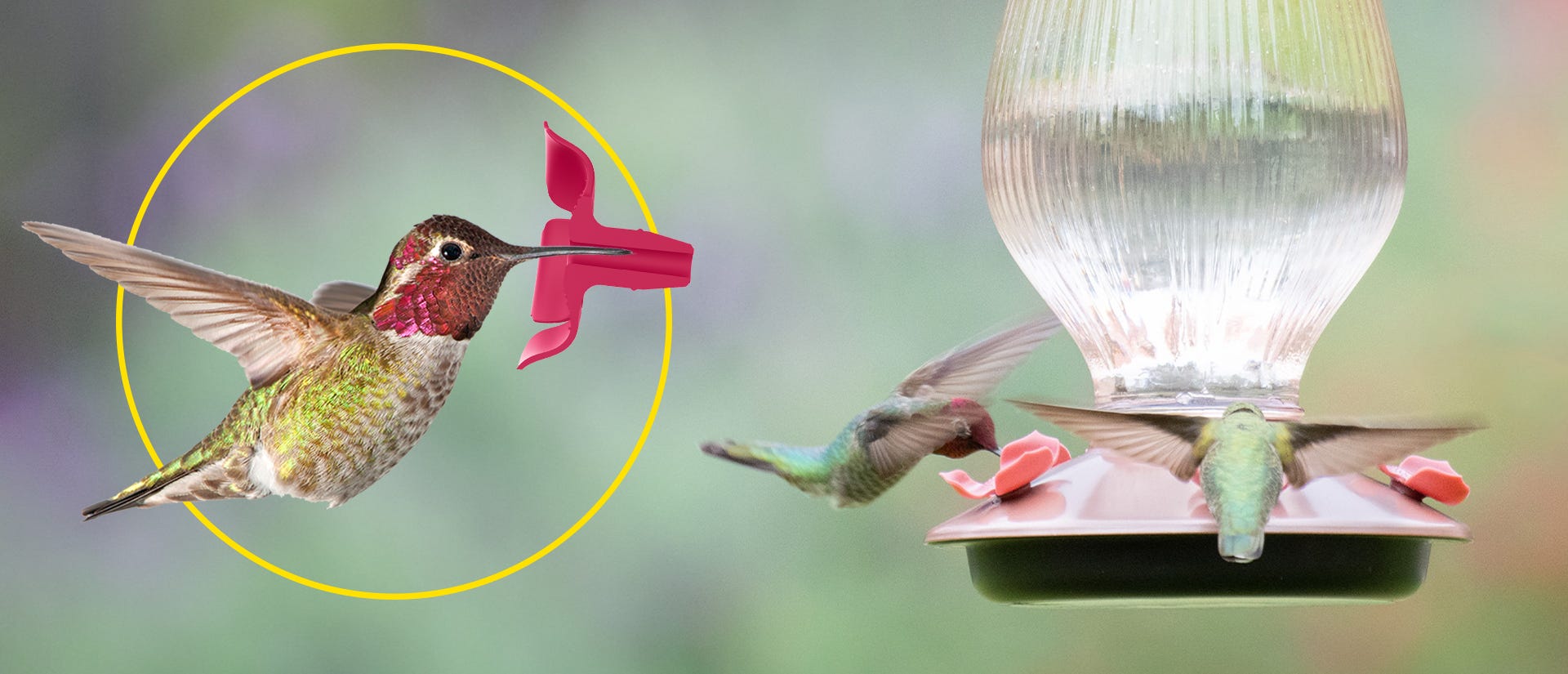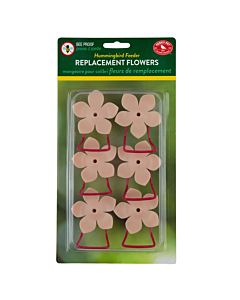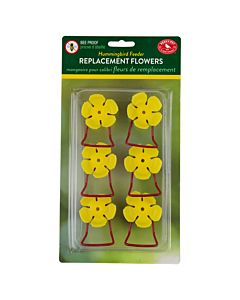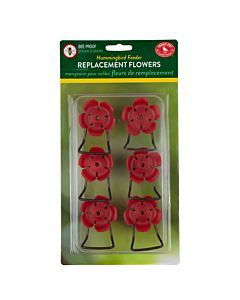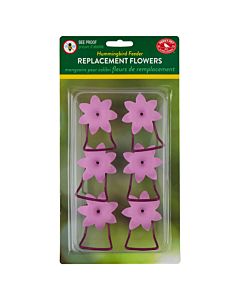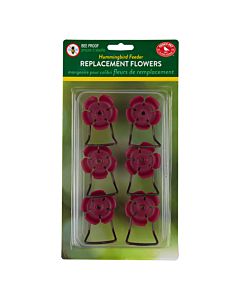When you’re watching hummingbirds buzzing about your yard, quickly flitting back and forth from port to port, flower to flower, you’ve probably wondered just how they manage to drink up all that sugary sweet nectar so quickly. After all, drinking nectar is a lot less straightforward than eating insects and seeds, right? Well, it turns out the answer is even more complicated than ornithologists initially believed.
The History of Hummingbird Feeding
Like many things related to hummingbirds, their feeding abilities have long been shrouded in mystery. For nearly two centuries, researchers believed that hummingbirds sucked up nectar with tube-like pathways in their tongue using capillary action, which is the same phenomenon that allows sponges and paper towels to absorb water and fountain pens to draw ink into the nibs. However, researcher Margaret Rubega, realized that this process is a very slow one, and is made even slower with thick liquids like nectar.
Since slow is certainly not a word used to describe anything related to hummingbirds, she started to reevaluate. Hummingbirds flap their wings up to 90 times and flick their tongues into flowers up to 18 times every second, so it must mean they have a faster method than capillary action! Turns out they don’t suck the nectar at all.
How Hummingbirds Drink Nectar
Decades after her initial skepticism, Rubega hired a student to help her research the mysterious feeding habits of hummingbirds. They began by meticulously crafting artificial flowers made with clear glass sides so they could film hummingbirds’ tongues dipping into an authentic ratio of nectar with specialty high-speed cameras. After reviewing the footage frame by frame, they discovered the long-held beliefs about hummingbirds using their tongues to suck up nectar were inaccurate.
In a video made by National Geographic (above), you can see the amazing truth that they uncovered. As it turns out, hummingbirds have forked tongues with hair-like fibers called lamellae. When the tongue dips into the nectar, it automatically separates. The forked tongue and lamellae automatically zip closed as the tongue pulls back, pulling nectar back into the beak with it. Rather than sucking the nectar, their tongue is essentially, grabbing and trapping nectar, carrying it into their mouths. As their tongue flicks back out for another mouthful, the action pushes the nectar toward their throat, kind of like a pump.
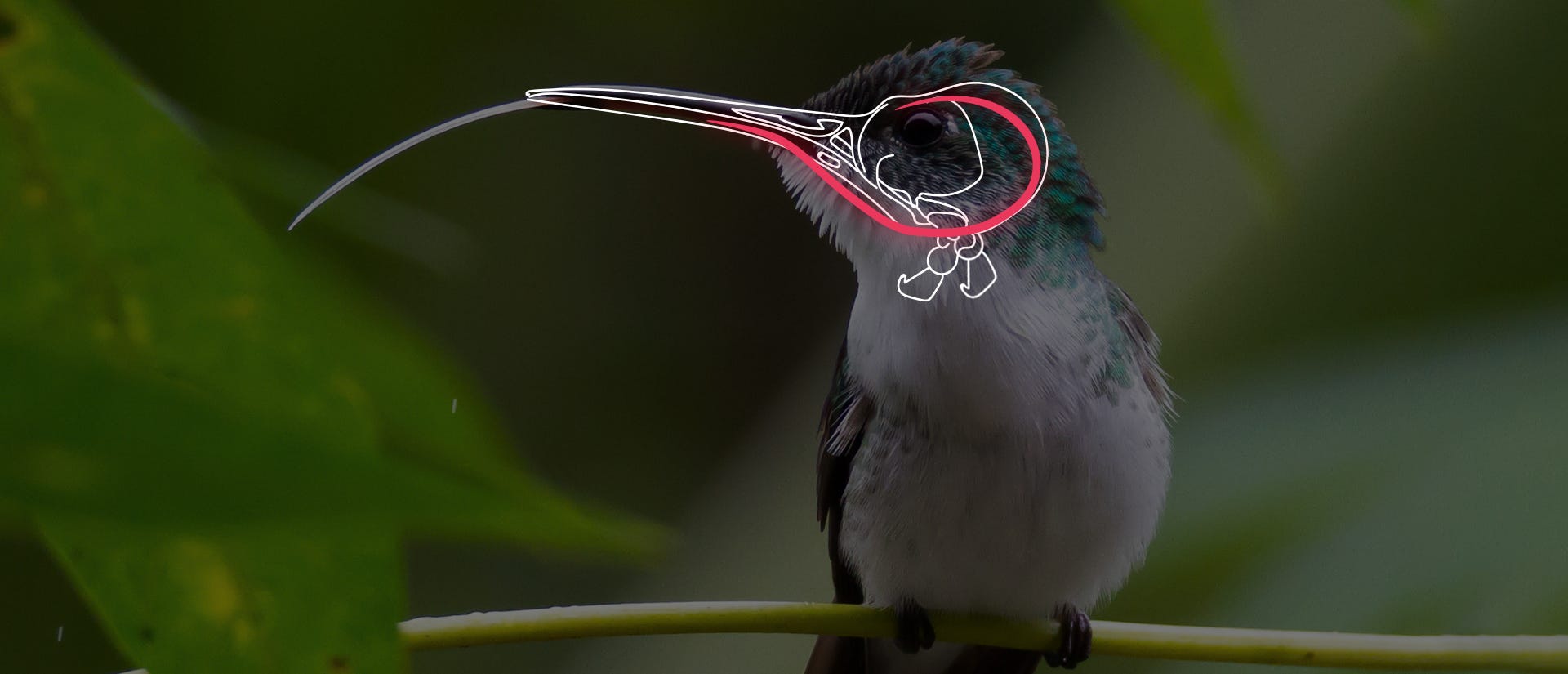
Even more amazing is the fact that this action is completely passive. Once the hummingbird has flicked its tongue out, the rest of the process happens automatically as the tongue hits liquid. This means their feeding capabilities require very little energy and are extremely efficient, leaving more energy for their fast-paced flying.
When not in use, hummingbirds' tongues wrap under the jaw then behind and over the head. This extremely long tongue is wrapped completely around their skull along a structure called the hyoid apparatus. A portion of the tongue is also stretchy allowing it to extend even further. So if you've ever thought that a hummingbird might be unable to reach the nectar in a feeder with long ports or bee guards, worry not! Their tongues are more than up to the task.
Feeding Ports Inspired by Nature
A better understanding of this feeding action is one of the many reasons we’ve designed our real flower-inspired ports. They’re soft and flexible with realistic silhouettes and details, making them look and feel more like the flowers that hummingbirds visit in nature. They’re now available in a variety of bright, hummingbird-attracting colors, and several flower styles, including hollyhock, petunia, zinnia, phlox, and more!
Garden-Fresh Flower Ports
The long, tapered port opening mimics the “stigma” of a real flower. This provides a more comfortable experience that’s gentler on beaks and caters to hummingbirds’ feeding style. The tapered opening also acts as a natural bee guard. Hummingbirds are able to use their long tongues to reach into the nectar reservoir, while bees are kept out.
Our real flower-inspired ports can be found on all of our latest Top-Fill Glass Hummingbird Feeders, our Handheld & Tabletop Hummingbird Feeder, and more. They’re even sold separately so you can replace, customize, and mix & match as you see fit!
Want to Learn More?
At Perky-Pet® we love learning about hummingbirds and sharing our knowledge with like-minded birding enthusiasts. Want to join in on the fun? Share your pictures, stories, and advice with us on Facebook or our Birding Community. You can also subscribe to our e-newsletter to stay up to date with our birding advice, new products, and exclusive offers.






